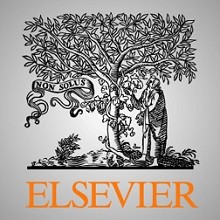
مغناطیس
Abstract
18-1- Atomic Magnetic Dipole Moment
18-2- Magnetization 18.3. Magnetic Induction
18-4- Potential Energy of Magnetic Dipole Moment
18-5- Larmor Precession
18-6- Quantum Theory of Diamagnetism
18-7- Paramagnetism
18-8- Hund’s Rule
18-9- Crystal Field Splitting
Suggested Reading
Abstract
The next four chapters are devoted exclusively to magnetism, a very important property of solids from the technological point of view. This chapter begins with an estimation of the atomic magnetic dipole moments responsible for the existence of magnetism in solids. The matrix representation of magnetization, magnetic susceptibility, and magnetic induction in magnetic solids has been presented. Classical and quantum theories of diamagnetism and paramagnetism have been described in reasonable detail. The magnetic susceptibility of paramagnetic solids obeys the Curie law at high temperatures. The chapter concludes with a statement of Hund’s rule, which is applied to evaluate the effective atomic magnetic moments in transition and rare-earth elements. It was noted that quenching of the orbital magnetic moment takes place due to the presence of an inhomogeneous crystal field.
ATOMIC MAGNETIC DIPOLE MOMENT
In an atom, electrons revolve around the nucleus and the nucleus contains protons and neutrons. An atom as a whole is electrically neutral, but it consists of moving charged particles that may behave as magnetic dipoles. An electron in an atom has two motions: orbital and spin. Similarly, protons and neutrons also possess orbital and spin motions inside the nucleus. Therefore, the magnetic moment of an electron has two principal contributions, which are the orbital and spin magnetic moments. There is also a third contribution to the magnetic moment arising from the spin-orbit interaction. If the spin and orbital motions are assumed to be independent of each other, then the spin-orbit contribution vanishes and the total magnetic moment of the ith electron m ! ei is the vector sum of its orbital and spin contributions, i.e.,
